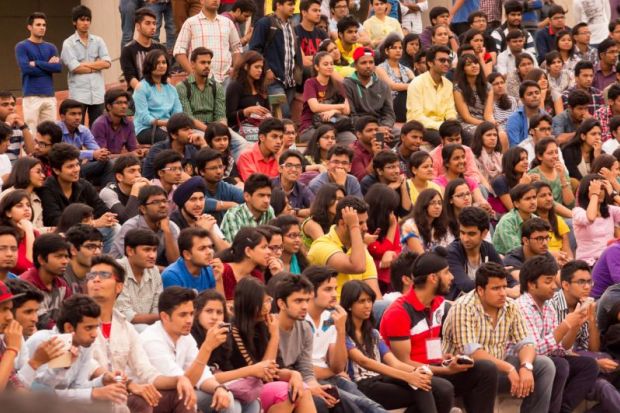Australia’s recommencement of visa processing has revived the flow of dodgy applications, a conference has heard.
Tara Cavanagh, minister counsellor for home affairs at the Australian High Commission in New Delhi, said that “old challenges around quality and integrity” had resurfaced amid a backlog of visa applications.
“We know there are non-genuine actors in our market who target visa applicants, agents and our government processes,” she told the Association of Australian Education Representatives in India (AAERI) convention. “We also know they are highly adaptable and some of those threats are only increasing in this time of global pandemic.”
Agents must “not be complacent about risk and quality”, she insisted.
The warnings echo concerns that AAERI has raised over South Asian visa applicants attracted to Australia by work and residency rather than educational opportunities. Some lack the necessary English language skills and educational background to study successfully or the financial resources to support themselves.
Department of Home Affairs data show that 30 to 35 per cent of would-be students applying for visas from India and Nepal are unsuccessful, compared with well under 10 per cent of offshore applicants from most other countries.
Ms Cavanagh said that her team had finalised several hundred visa applications since 20 July, when processing resumed, but each case was taking longer than usual – typically about four months for would-be university students – because of coronavirus-related administrative delays.
Globally, applications to study in Australia had fallen by 33 per cent this financial year, although there had been a rebound since processing resumed. But interest from the subcontinent has been particularly diminished by the pandemic.
Phil Honeywood, chief executive of the International Education Association of Australia, said applications had fallen by 46 per cent from India and 60 per cent from Nepal, compared with just 19 per cent from China. These figures predated the government’s announcement of more favourable visa arrangements, so forthcoming data might show an uptick.
“But it raises questions,” Mr Honeywood said. “Is it affordability? Is it because [of] the Covid financial situation? Or is it because many students are choosing to go to the UK, which has kept its borders open?”
He said that Australian institutions could expect a “health dividend” because of their country’s success in suppressing the coronavirus. “But we have to be careful. If we keep our borders closed for too long, we may lose the advantage from having been seen to contain the virus very well.”
Mr Honeywood said that states and territories were reviving plans to bring international students to Australia using specially arranged charter flights. First in line was the Northern Territory, which would quarantine students in a former miners’ camp near Darwin.
He said that it was “four-star equivalent” with beds for 3,000 people. Many students would subsequently move on to other parts of Australia, with only 100 of them bound for nearby Charles Darwin University. South Australia has also resuscitated a plan to fly in 300 foreign students to Adelaide.
However, some 6,000 students stranded in India are unlikely to figure in such plans. Barry O’Farrell, the High Commissioner to India, said neither Malaysia nor Singapore, which would function as transit hubs for the returning students, had reopened their borders to Indian citizens.
Mr O’Farrell told the conference that he could not guarantee Indian students would be able to reach Australia in time for the 2021 academic year.
Register to continue
Why register?
- Registration is free and only takes a moment
- Once registered, you can read 3 articles a month
- Sign up for our newsletter
Subscribe
Or subscribe for unlimited access to:
- Unlimited access to news, views, insights & reviews
- Digital editions
- Digital access to THE’s university and college rankings analysis
Already registered or a current subscriber? Login








